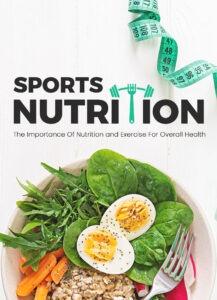How to Start a Vegan Diet: A Comprehensive Guide

Looking for more amazing products? Check out our online store and explore our collection here! Happy shopping!
Before diving in, please note: This post is for informational purposes only. If you’d like to know more about how we approach topics, feel free to check out our friendly Disclaimer Page.
Hey there, amazing readers! 
We’re committed to delivering quality posts, and your support (even just sticking around despite the ads) means everything to us. So, bear with us, and thanks for helping us keep the good vibes rolling. Now, on to the fun stuff!
TRANSLATE BUTTON AT THE END OF THE ARTICLE
A Quick Overview
Embarking on a vegan diet can be a transformative journey towards a healthier lifestyle.
Whether you are looking to reduce your carbon footprint, improve your health, or advocate for animal welfare, transitioning to a vegan diet requires careful planning and understanding of plant-based nutrition.
In this comprehensive guide, we will delve into the intricacies of starting a vegan diet, from the benefits of going vegan to practical tips on planning balanced vegan meals and navigating social situations as a vegan.
1. Introduction to Vegan Diet
A vegan diet is a plant-based dietary approach that excludes all animal products, including meat, dairy, eggs, and honey.
Instead, vegans consume a variety of fruits, vegetables, grains, legumes, nuts, seeds, and plant-based alternatives.
The primary focus of a vegan diet is on whole, unprocessed foods that are rich in essential nutrients and antioxidants.
By eliminating animal products from your diet, you not only reduce your impact on the environment but also promote better health and overall well-being.
2. Benefits of Going Vegan
The decision to adopt a vegan diet comes with a myriad of benefits, both for your health and the planet.
Some of the key advantages of going vegan include:
Lower risk of chronic diseases such as heart disease, diabetes, and certain cancers
Improved digestion and gut health due to the high fiber content in plant-based foods
Reduced carbon footprint and water usage, contributing to environmental sustainability
Compassionate living by avoiding the exploitation of animals for food
Weight management and potential weight loss due to the naturally low-calorie density of plant-based foods
3. Understanding Veganism
Veganism is not just a dietary choice but a lifestyle that seeks to minimize harm to animals and the environment.
It encompasses a philosophy of compassion and ethical responsibility towards all living beings.
In addition to diet, vegans also avoid using products derived from animals, such as leather, wool, and cosmetics tested on animals.
Understanding the ethical underpinnings of veganism can help you stay committed to your dietary choices and make informed decisions in all aspects of your life.
4. Transitioning to Vegan Lifestyle
Transitioning to a vegan lifestyle can be a gradual process that allows your body and palate to adjust to new dietary habits.
Here are some tips for a smooth transition:
Start by incorporating more plant-based meals into your diet and gradually reducing animal products.
Experiment with different fruits, vegetables, grains, and legumes to discover new flavors and textures.
Educate yourself about vegan nutrition to ensure you are meeting your body’s needs for essential nutrients.
Connect with other vegans for support, recipes, and advice on transitioning to a plant-based diet.
Be patient with yourself and allow time for your taste buds and digestive system to adapt to a vegan diet.
5. Essential Nutrients in Plant-Based Diet
While a vegan diet can provide all the nutrients your body needs, it is important to pay attention to certain key nutrients that may require special consideration.
Some essential nutrients in a plant-based diet include:
Protein: Sources include beans, lentils, tofu, tempeh, seitan, nuts, seeds, and whole grains.
Iron: Found in leafy greens, lentils, beans, fortified cereals, and dried fruit.
Discover "SUPERFOODS: The Key to Health and Balance
"
Calcium: Sources include fortified plant milks, tofu, leafy greens, almonds, and sesame seeds.
Vitamin B12: Supplementation or fortified foods are recommended for vegans, as B12 is primarily found in animal products.
Omega-3 fatty acids: Include sources like flaxseeds, chia seeds, hemp seeds, walnuts, and algae-based supplements.
6. Planning Balanced Vegan Meals
Creating balanced vegan meals involves incorporating a variety of foods to ensure you are meeting your nutritional needs.
A well-rounded vegan meal should include:
A source of protein: Beans, lentils, tofu, tempeh, or seitan.
Whole grains: Brown rice, quinoa, whole wheat pasta, or barley.
Vegetables: A colorful array of leafy greens, cruciferous vegetables, and other seasonal produce.
Healthy fats: Avocado, nuts, seeds, and olive oil.
Plant-based dairy alternatives: Fortified plant milks, yogurts, and cheeses for added calcium and vitamin D.
Herbs and spices: To add flavor and variety to your dishes without relying on animal products.
7. Stocking Vegan Pantry
Having a well-stocked vegan pantry is essential for preparing delicious and nutritious meals.
Some staples to keep in your vegan pantry include:
Legumes: Dried or canned beans, lentils, chickpeas, and split peas.
Whole grains: Brown rice, quinoa, oats, whole wheat pasta, and barley.
Nuts and seeds: Almonds, walnuts, flaxseeds, chia seeds, hemp seeds, and pumpkin seeds.
Plant-based proteins: Tofu, tempeh, seitan, and plant-based meat alternatives.
Nutritional yeast: A vegan source of B vitamins and a cheesy flavor for recipes.
Condiments and sauces: Soy sauce, tamari, tahini, hot sauce, and various spices for seasoning.
8. Reading Food Labels for Vegans
Navigating food labels as a vegan can help you identify hidden animal ingredients and make informed choices about the products you consume.
When reading food labels, look out for the following non-vegan ingredients:
Gelatin: Derived from animal collagen and commonly found in gummy candies, marshmallows, and gel capsules.
Carmine: A red dye made from crushed insects and used in food coloring and cosmetics.
Casein: A milk protein often added to processed foods, protein bars, and supplements.
Lard: Rendered pork fat used in baking, frying, and certain snack foods.
Whey: A dairy protein found in many packaged products like bread, crackers, and protein powders.
9. Avoiding Common Vegan Pitfalls
When transitioning to a vegan diet, it is important to be aware of common pitfalls that may hinder your success.
Some common vegan pitfalls to avoid include:
Relying too heavily on processed vegan foods like mock meats and cheeses, which can be high in sodium and additives.
Neglecting essential nutrients like vitamin B12, iron, calcium, and omega-3 fatty acids by not planning balanced meals.
Feeling isolated or judged in social settings where vegan options may be limited or misunderstood.
Failing to communicate your dietary preferences and needs to friends, family, and restaurant staff when dining out.
Not seeking support from online communities, vegan cookbooks, and nutrition resources to stay inspired and informed on your vegan journey.
10. Eating Out as a Vegan
Eating out as a vegan can be a fun and rewarding experience with a little preparation and creativity.
Discover "Sports Nutrition: The Importance of Nutrition and Exercise for Overall Health
"
When dining out, consider the following tips to ensure a satisfying meal:
Research vegan-friendly restaurants in your area or look for menu options that can be easily modified to suit your dietary preferences.
Call ahead to inquire about vegan options or ask the chef to prepare a special plant-based dish for you.
Be polite and patient when communicating your dietary needs to restaurant staff, and express gratitude for accommodating your request.
Look for ethnic cuisines like Indian, Thai, Middle Eastern, or Mexican, which often feature plant-based dishes rich in flavor and spices.
Consider ordering appetizers, side dishes, or customizing salads and grain bowls to create a satisfying meal without compromising your vegan values.
11. Vegan Recipes and Meal Ideas
Experimenting with vegan recipes and meal ideas can add variety and excitement to your plant-based diet.
Here are some delicious vegan recipes to try:
Creamy Coconut Curry Lentil Soup
BBQ Jackfruit Tacos with Mango Salsa
Chickpea and Spinach Stuffed Sweet Potatoes
Cauliflower Alfredo Pasta with Roasted Cherry Tomatoes
Vegan Pad Thai with Tofu and Peanut Sauce
Roasted Vegetable Quinoa Salad with Lemon Tahini Dressing
Black Bean and Corn Quesadillas with Avocado Crema
Sweet Potato and Black Bean Chili with Cilantro Lime Rice
Mediterranean Buddha Bowl with Hummus Dressing
Vegan Chocolate Avocado Mousse with Berries
12. Staying Motivated on Vegan Diet
Staying motivated on a vegan diet involves finding inspiration, setting realistic goals, and celebrating your progress along the way.
Here are some tips to help you stay committed to your plant-based lifestyle:
Connect with like-minded individuals in vegan communities, social media groups, and local meetups to share experiences and support each other.
Set achievable goals for yourself, whether it’s trying a new vegan recipe every week, reducing your consumption of animal products, or exploring plant-based restaurants in your area.
Stay informed about vegan nutrition, environmental impact, and animal welfare issues to reinforce your commitment to a vegan lifestyle.
Treat yourself to vegan snacks, desserts, and comfort foods to satisfy cravings and prevent feelings of deprivation.
Remember your reasons for going vegan, whether it’s for your health, the animals, or the planet, and reflect on how your choices align with your values and beliefs.
Conclusion
Starting a vegan diet is a rewarding journey that can lead to improved health, environmental sustainability, and ethical living.
By understanding the principles of veganism, planning balanced meals, and staying motivated on your plant-based path, you can enjoy a vibrant and fulfilling lifestyle that aligns with your values and aspirations.
With the right knowledge and support, transitioning to a vegan diet can be a positive and empowering experience that enriches your life and contributes to a more compassionate world.

The Enlightenment Journey is a remarkable collection of writings authored by a distinguished group of experts in the fields of spirituality, new age, and esoteric knowledge.
This anthology features a diverse assembly of well-experienced authors who bring their profound insights and credible perspectives to the forefront.
Each contributor possesses a wealth of knowledge and wisdom, making them authorities in their respective domains.
Together, they offer readers a transformative journey into the realms of spiritual growth, self-discovery, and esoteric enlightenment.
The Enlightenment Journey is a testament to the collective expertise of these luminaries, providing readers with a rich tapestry of ideas and information to illuminate their spiritual path.
Our Diverse Expertise
While our primary focus is on spirituality and esotericism, we are equally passionate about exploring a wide range of other topics and niches 

To ensure we provide the most accurate and valuable insights, we collaborate with trusted experts in their respective domains 
Our blog originally focused on spirituality and metaphysics, but we’ve since expanded to cover a wide range of niches. Don’t worry—we continue to publish a lot of articles on spirituality! Frequently visit our blog to explore our diverse content and stay tuned for more insightful reads.
Hey there, amazing reader! 
Check out our store here and take a peek at some of our featured products below! Thanks for being awesome!














